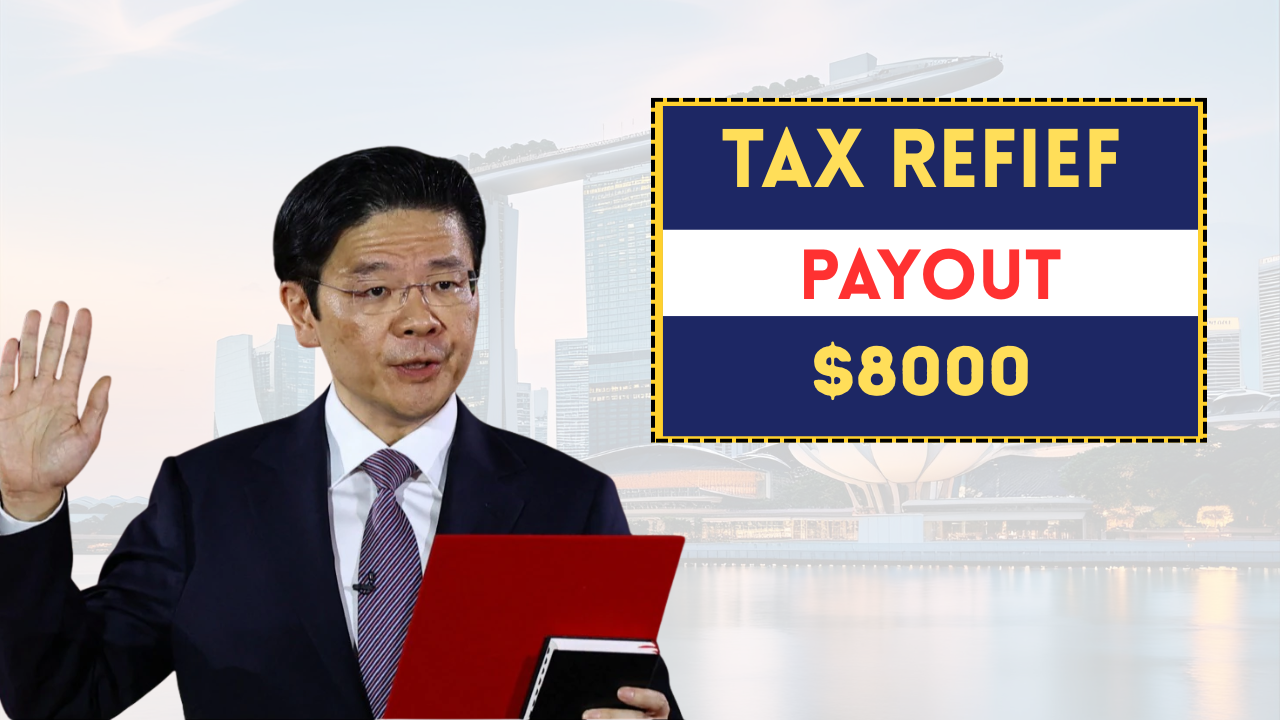To acknowledge and support the efforts of working individuals—especially seniors and persons with disabilities—the Singapore government continues to offer the Earned Income Relief (EIR). This personal income tax relief provides a reduction in taxable income based on the amount of earned income received during the year. In 2025, EIR remains a key measure that rewards work participation while helping reduce the overall tax burden for low- and middle-income earners.
Earned Income Relief (EIR) 2025
Overview
| Key Aspect | Details |
|---|---|
| Relief name | Earned Income Relief (EIR) |
| Relief type | Personal income tax relief |
| Maximum relief amount | $1,000 – $8,000 (depending on age and status) |
| Target group | Working individuals (employees, self-employed, or commission earners) |
| Purpose | Reduce the tax burden on those earning active income |
| Applicable to | Singapore tax residents |
| Claim method | Auto-included during annual IRAS tax filing |
| Official portal | www.iras.gov.sg |
Why Earned Income Relief Matters in 2025
With increasing costs of living and a growing elderly workforce, the Earned Income Relief plays a pivotal role in encouraging continued employment while reducing tax liability. It benefits not only low-income earners but also seniors and people with disabilities who continue to contribute to the workforce.
In 2025, the relief continues to promote inclusive employment and offers a practical form of financial recognition for those who choose to stay economically active.
Eligibility Criteria
To qualify for Earned Income Relief in Year of Assessment (YA) 2025:
- You must be a Singapore tax resident
- You must have earned employment, trade, or professional income in 2024
- Relief is only granted on earned income (not passive income like rent or dividends)
- Special amounts apply if you are aged 55 and above or have a certified disability
There is no need to apply separately—IRAS automatically includes the relief based on the income declared.
Relief Amounts by Age Group
| Group | Maximum Relief Amount |
|---|---|
| Below 55 years old | $1,000 |
| 55 to 59 years old | $6,000 |
| 60 years old and above | $8,000 |
| Persons with disabilities (any age) | $4,000 additional relief |
If a working individual is both senior-aged and disabled, the reliefs are combined.
Example Scenarios
| Profile | Relief Amount in YA 2025 |
|---|---|
| 45-year-old employee earning $30,000 | $1,000 |
| 58-year-old self-employed hawker | $6,000 |
| 62-year-old part-time cleaner | $8,000 |
| 50-year-old visually impaired freelance writer | $5,000 ($1,000 + $4,000) |
| 67-year-old disabled taxi driver | $12,000 ($8,000 + $4,000) |
What Counts as Earned Income
| Income Type | Eligible for EIR? |
|---|---|
| Salary from a full-time or part-time job | ✅ Yes |
| Commission from sales | ✅ Yes |
| Self-employed or freelance income | ✅ Yes |
| Income from professional practice | ✅ Yes |
| CPF LIFE payouts or rental income | ❌ No |
| Dividends and bank interest | ❌ No |
EIR only applies to active income where you perform work or services in exchange for payment.
Breakdown of the Relief
| Category | Details |
|---|---|
| Type of income | Must be from employment, trade, business, profession, or vocation |
| Passive income | Excluded (e.g., investment or rental income) |
| Tax residency | Must be a Singapore tax resident |
| Automatically applied | Yes, based on declared income and the IRAS database |
| Can be combined with | Other reliefs like CPF Relief, Course Fees Relief, and NSman Relief |
Earned Income Relief for Persons with Disabilities
Individuals certified as having a physical or mental disability qualify for an additional $4,000 Earned Income Relief. The disability must:
- Permanently prevent the person from performing 1 or more basic activities of daily living (ADLs), or
- Result in complete blindness in both eyes, or
- Be assessed by a qualified doctor and certified on IRAS’s disability form
This relief acknowledges the effort and challenges disabled individuals face in remaining economically active.
How to Claim EIR
| Step | Details |
|---|---|
| Filing method | E-file via myTax Portal (Form B/B1) |
| For most individuals | Auto-included based on income declared in 2024 |
| For persons with disabilities | Submit doctor’s certification using the IRAS Form GP |
| Timeframe | Submit during annual tax filing (March–April 2025) |
| Review or correction | Use myTax Portal to submit amendments if needed |
Who Is Not Eligible
| Exclusion Criteria | Reason |
|---|---|
| No earned income in 2024 | EIR only applies to active employment or business income |
| Non-tax residents | EIR is for Singapore tax residents only |
| Retirees or individuals with passive income | Income must come from work, not from savings or property |
| Dependents or full-time students without work | Must receive earned income to qualify |
Tips to Maximise Earned Income Relief
- Ensure that all earned income is properly declared to IRAS
- For disabled individuals, get certified early and submit documentation on time
- Combine with other reliefs such as:
- NSman Relief
- Spouse/Parent/Handicapped Dependent Relief
- Course Fees Relief
- Senior workers (60+) are automatically eligible for higher EIR, so no need to apply separately
A Practical Tax Relief That Rewards Work
The Earned Income Relief 2025 reflects Singapore’s commitment to recognising every individual’s contribution to the workforce, regardless of age or ability. Whether you’re a full-time employee, part-time worker, freelancer, or self-employed, this relief directly reduces your tax liability.
For seniors and persons with disabilities, it provides meaningful financial support while encouraging continued participation in the labour force.
Helpful Information
Q1: Do I need to apply for Earned Income Relief?
A: No. It is automatically included by IRAS during tax assessment based on your declared income.
Q2: I only worked part-time in 2024. Do I qualify?
A: Yes. As long as you earn employment or self-employment income, you are eligible, even for part-time work.
Q3: I have a disability. How do I claim the extra relief?
A: You must submit a doctor-certified IRAS Form GP confirming your disability status.
Q4: Can I claim this relief if I earned rental income only?
A: No. EIR applies strictly to earned income, not passive income like rent or dividends.
Q5: What if I’m both over 60 and disabled?
A: You can claim both senior and disability reliefs—up to a total of $12,000.

